List of Books
- HOME
- List of Books
List of books and translations
Here are some of Tomoo Yoda’s books and translations.
-
Japanese cover Original cover 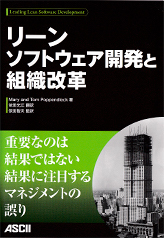
リーンソフトウェア開発と組織改革
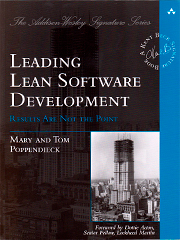
Leading Lean Software Development: Results Are not the Point
-
Title, Author, Translator, Publisher Leading Lean Software DevelopmentResults Are not the Point
[Author] Tom & Mary Poppendieck [Translator] YODA Mitsue [Supervising translator] YODA Tomoo [No.] 15
This is the third book in the series by Tom and Mary Poppendieck, who explain Lean Software Development, a method for implementing the Toyota Production System in the software business.
Leadership and 24 Frames for Leading the Software Business. It is neither a business book nor a mere technical manual. It is a book that foreshadows the beginning of the software industry’s maturation period.
-
Japanese cover Original cover 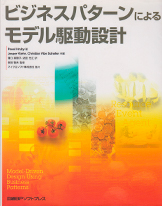
ビジネスパターンによるモデル駆動設計
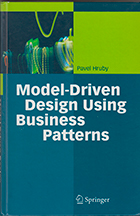
Model-Driven Design Using Business Patterns
-
Title, Author, Translator, Publisher Model-Driven Design Using Business Patterns
New Modeling Methodology with REA[Author] Pavel Flavie [Translator] MIZOGUCHI Mariko, YODA Mitsue [Supervising Translator] YODA Tomoo [Cooperation] Microsoft Corporation [Publisher] Nikkei BP Softpress, Inc. [No.] 14
REA refers to R (Resource), E (Event), and A (Agent), which are the three major elements in the structural model of business applications. Modeling rules are defined for these elements.
Therefore, in order to model them, it is necessary to cut into the target business field at a certain depth. Many of the previous modeling would have been merely adapted from UML (Unified Modeling Language).
This has caused problems with variations in the quality of the modeling, but REA can prevent such problems to some extent. In addition, because it follows certain rules, the REA model can be rewritten as a model of logistics and commercial distribution (this is called a value chain model).
When the structuring by REA is finished, further structuring by policy level and addition of behavior models using aspects are done, and finally the design and implementation of business applications are obtained.
-
Japanese cover Original cover 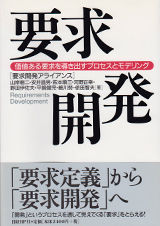
要求開発
no book
-
Title, Author, Translator, Publisher Requirements DevelopmentProcess and modeling to derive valuable requirements
[Author] YAMAGISHI Koji, YASUI Masao, HAGIMOTO Junzo, KONO Masayuki, NODA Isao, HIRANABE Kenji, HOSOKAWA Tsutomu, YODA Tomoo (Requirements Development Alliance) [Publisher] Nikkei Business Publications, Inc. [No.] 13
This is the first book in Japan that systematically explains requirements development by the director of the Requirements Development Alliance, which was established last year.
This book describes the requirements development methodology Openthology 1.0, which will be presented for the first time at the second Requirements Development Summit on March 17, 2006.
This book is a must-read for those who are interested in requirements development in user companies, consulting companies, and system integrator companies.
-
Japanese cover Original cover 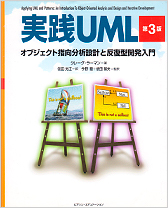
実践UML
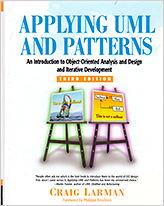
Applying UML and Patterns: An Introduction to Object-Oriented Analysis and Design and Iterative Development
-
Title, Author, Translator, Publisher Applying UML and Patterns: An Introduction to Object-Oriented Analysis and Design and Iterative Development
[Author] Craig Lerman [Translator] YODA Mitsue [Supervising translator] YODA Tomoo , KONNO Mutsumi [No.] 12
Thank you for your patience. This is the long-awaited third edition.
-
Japanese cover Original cover 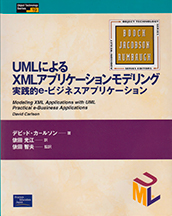
UMLによるXMLアプリケーションモデリング
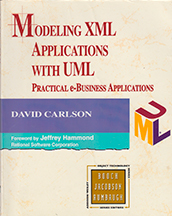
Modeling XML Applications with UML: Practical e-Business Applications
-
Title, Author, Translator, Publisher Modeling XML Applications with UMLPractical e-Business Applications
[Author] David Carlson [Translator] YODA Mitsue [Supervising translator] YODA Tomoo [Publisher] Pearson Education Inc. [No.] 06
This book is not a programming guide for XML applications; the emphasis is on the analysis/design of XML vocabularies and their use in distributed systems.
Readers who must develop systems using XML, or who are considering the benefits of such systems, will find this book useful (from the author’s foreword).
-
Japanese cover Original cover 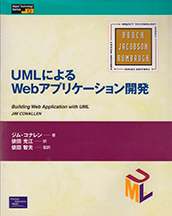
UMLによるWebアプリケーション開発
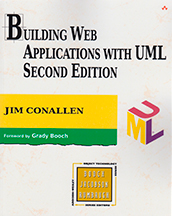
Building Web Applications with UML
-
Title, Author, Translator, Publisher Building Web Applications with UML
[Author] Jim Conallen [Translator] YODA Mitsue [Supervising translator] YODA Tomoo [Publisher] Pearson Education Inc. [No.] 05
This book describes a concrete method for developing web applications using the Unified Modeling Language (UML).
With the spread of the Internet and e-commerce, there is a huge demand for Web applications, and it is no exaggeration to say that the methodology to support their efficient development is now an important issue for the software industry.
In this sense, this book is truly long-awaited.
-
Japanese cover Original cover 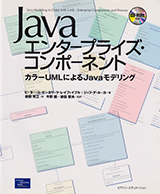
Javaエンタープライズ・コンポーネント

Java Modeling In Color With UML: Enterprise Components and Process
-
Title, Author, Translator, Publisher Java Modeling In Color With UMLEnterprise Components and Process
[Author] Peter Cord, et al. [Translator] YODA Mitsue, YODA Tomoo, KONNO Mutsumi [Publisher] Pearson Education Inc. [No.] 04
This book attempts to classify objects into four categories that do not exist in the problem domain (“moment-time isolation”, “role”, “description (catalog item-like description)”, and “party, place, or thing”) and represent them with colors.
The color coding allows the modeling to be more expressive while also improving the understanding of the modeling.
This book uses the same terminology and classification as the previous book, Java Object Design with UML, so it can be read in conjunction with that book for a deeper understanding.
-
Japanese cover Original cover 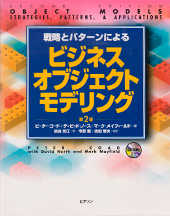
戦略とパターンによるビジネスオブジェクトモデリング
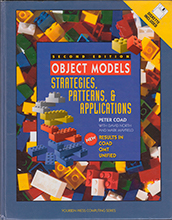
Object Models: Strategies, Patterns, and Applications
-
Title, Author, Translator, Publisher Object Models: Strategies, Patterns, and Applications
[Author] Peter Cord, et al. [Translator] YODA Mitsue [Translator] YODA Tomoo, KONNO Mutsumi [Publisher] Pearson Education Inc. [No.] 03
A classic book on object modeling using strategies and patterns by Peter Cord, a master of the art of object modeling, this book explains the key business object design techniques for 3-tier and N-tier architectures with easy-to-understand examples.
The accompanying handbook covers 148 strategies and 31 patterns. It is immediately applicable to the reader’s business object design.
-
Japanese cover Original cover 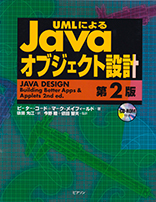
Javaオブジェクト設計
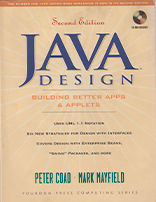
Java Design: Building Better Apps and Applets (2nd Edition)
-
Title, Author, Translator, Publisher Java DesignBuilding Better Apps and Applets (2nd Edition)
[Author] Peter Cord, et al. [Translator] YODA Mitsue [Supervising translator] YODA Tomoo [Publisher] Pearson Education Inc. [No.] 01
J It has been two years since Java Design was published, and in that time Java has gained wide acceptance.
The first edition focused more on design rather than programming, and while Java programming books change rapidly, this book about design remained a bestseller for two years. It remained a bestseller for two years.
The most visible feature of the second edition is the unification of the UML (Unified Modeling Language) notation. The content features include 68 new pages of new sections.



